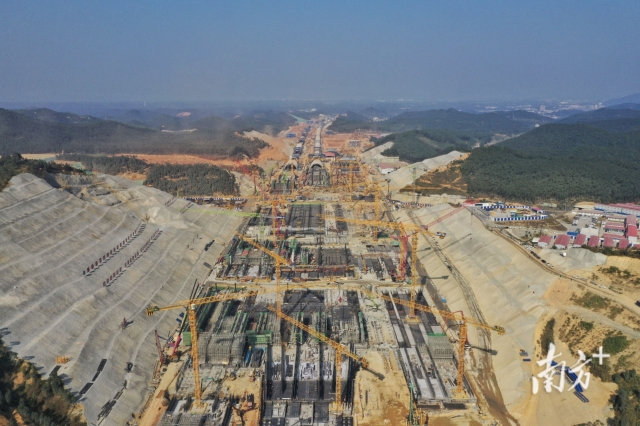03/26/2025 Source: Global Times
Share:
Guangdong Province has unveiled its high-quality transportation development plan for 2025 to 2027. The plan includes key projects such as the Zhanjiang-Haikou High-Speed Railway, the second Guangzhou-Shenzhen Expressway, and the Shenzhen-Zhuhai Sea-Crossing Bridge. The plan also supports the launch of intra-city and intercity low-altitude passenger routes in Guangzhou, Shenzhen, and Zhuhai.
From 2025 to 2027, Guangdong plans to invest approximately 600 billion yuan in road and waterway projects, with a total transportation investment (including railways and airports) expected to reach 900 billion yuan.

Building smooth inter-regional and inter-provincial routes
In terms of railway construction, the plan accelerates projects like the second Guangzhou-Shenzhen High-Speed Railway, designed with a speed of 350 km/h to connect the city centers of Guangzhou, Dongguan, and Shenzhen. It also advances ongoing projects like the Guangzhou-Zhanjiang and Shantou-Shanwei railways, while starting construction on new projects such as the Zhanjiang-Haikou High-Speed Railway and Guangzhou-Qingyuan-Yongzhou High-Speed Railway.
In terms of port cluster construction, efforts will be made to develop Guangzhou and Shenzhen ports into international hub seaports, while Shantou and Zhanjiang ports will serve as regional hubs for eastern and western Guangdong. New shipping routes to Japan, South Korea, India, Pakistan, and countries from the Middle East and South America will be explored.
Plans for world-class airport cluster development include the acceleration of the third-phase expansion of Guangzhou Baiyun Airport and the third runway expansion at Shenzhen Baoan Airport. New projects like Guangzhou’s new airport and Yangjiang Airport will begin. Preliminary work on the second phase of Huizhou Airport, Shanwei Airport, Yunfu Airport, and general airports in Jiangmen Taishan and Zhanjiang Leizhou will be carried out.
The plan also calls for strengthened inter-regional transportation with Hong Kong and Macao, including the coordination of early-stage research on the Shenzhen-Hong Kong Western Railway (Hung Shui Kiu to Qianhai) and the start of construction on the Guangzhou-Zhuhai-Macao High-Speed Railway segment from Hezhou to Hengqin.

Building an efficient city cluster transportation network
Guangdong will speed up the construction of the "Rail Transit-based Greater Bay Area," advancing projects like the intercity railways within the Guangzhou and Shenzhen metropolitan areas.
The plan proposes building a transportation network around the Pearl River Estuary, advancing the construction of major river-crossing projects like the Shiziyang Passageway and the Shenzhen-Jiangmen Railway, while moving forward on projects like the Lianhuashan Cross-River Passage and the expansion of Humen Bridge. The feasibility of building the Shenzhen-Zhuhai Sea-Crossing Bridge will also be studied.
Over the next three years, Guangdong will establish pilot cities for low-altitude transportation, construct a provincial-level comprehensive flight service station, and build Class A flight service stations in Guangzhou, Shenzhen, and Zhuhai. General airports and drone takeoff and landing points will also be developed. Cities will be supported in launching intra-city and intercity low-altitude passenger routes, as well as inter-regional low-altitude flight services.
Guangdong will also deepen the application of new energy buses, aiming for 100% electrification in urban public transportation, while applying for hydrogen fuel vehicles and autonomous driving.